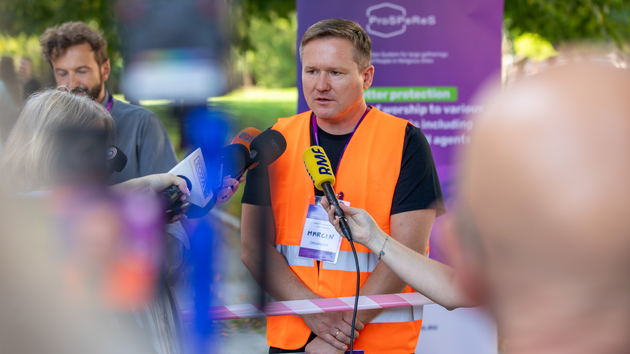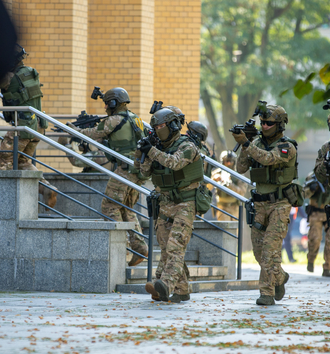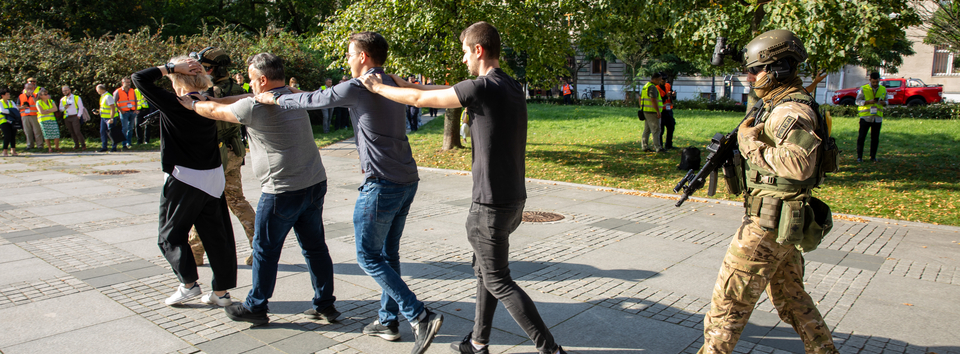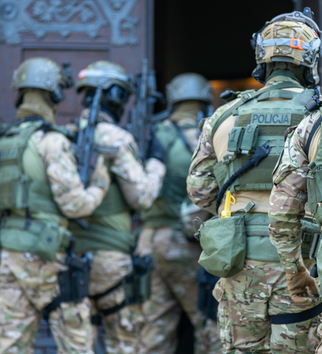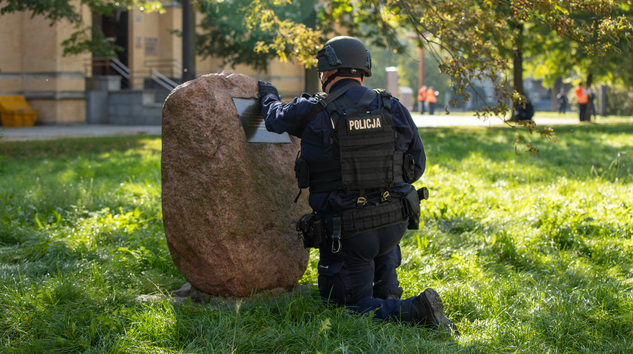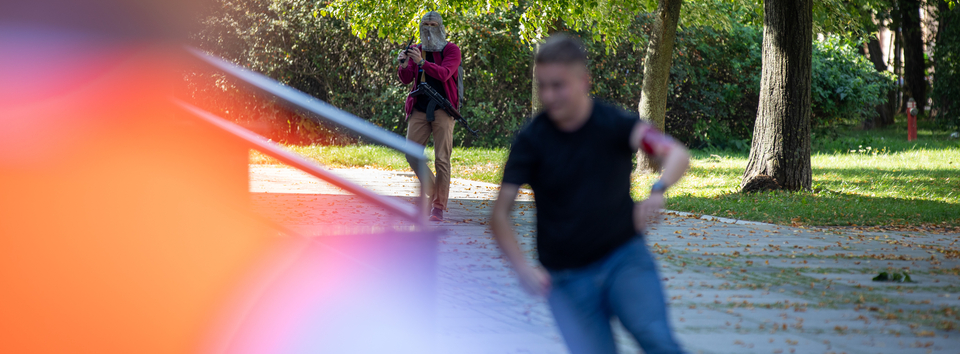The large-scale exercise at the Lodz Cathedral constituted a simulation of terrorist threats that can occur in places of worship. The event, organised by the University of Lodz, the Lodz Regional Police Headquarters, the Archdiocese of Lodz and the ProSPeRes project consortium, was attended by 250 people, including 150 police officers. The exercise made it possible to test and improve the proposed preventive measures and response procedures such as the organisation and operation of the welcome team, checking the facility for suspicious objects, incident management, responding to a terrorist attack with CBRN agents, evacuation, 'invacuation' and 'lockdown', communication and cooperation with the services during and after an incident.
Dr Rafał Batkowski, an expert from the University of Lodz working in the ProSPERES programme, emphasises that checking procedures in a large facility such as the Lodz Cathedral is very important:
This exercise is non-standard in nature. From our perspective, it is very important because it concerns all actors on the security scene – religious personnel, volunteers, police units, fire brigades and other public services – all those who can make a real difference to the safety of the faithful and such an important facility.
The entire event was watched in real time by around 50 observers, including a group of international representatives working on CBRN and security issues, as well as observers from the European Commission. The assumption of the exercise was to test the reactions of staff, the faithful and public services in as realistic a setting as possible. Initial feedback from the observers confirmed that thanks to the following of the project procedures, panic and chaos were avoided during the event, the faithful and staff were able to successfully escape or hide in the facility and then cooperate with police and firefighters.
ProSPeReS project is aimed at increasing the level of protection in places of religious worship thanks to the cooperation of scientists, police officers, firefighters with Catholic Church, the Greek Orthodox Church and the Jewish Community.
In recent years, extremists have attacked religious sites of various faiths. Information gathered from religious institutions and authorities indicates that there is a growing awareness of risks and a need for increased security with keeping the balance between security measures and preservation of the open nature of religious sites
– Marcin Podogrocki, the project manager from the Biohazard Prevention Centre at the University of Lodz.
The ProSPeres system includes measures to enhance prevention, protection, deterrence and response to various types of terrorist threats and incidents that may occur at religious sites, including attacks using CBRN (chemical, biological, radiological and nuclear) agents.
The consortium has developed a set of recommendations on prevention and response procedures, equipment, infrastructure improvements and protocols for working with public services. The implementation of the system includes:
- preparation and initiation of modular training courses, including eLearning with VR,
- conducting large-scale exercises,
- launching a Europe-wide awareness campaign targeting religious leaders, venue staff and congregation participants.
There are 17 partners in the consortium led by the University of Lodz. These from Poland include:
- Lodz Regional Police Headquarters,
- Archdiocese of Lodz
- Jewish Community of Warsaw,
- Warsaw Metropolitan Police,
- Dynamic Safety Corporation sp. z o.o.,
- The Social Observatory,
- High Schools of Banking,
- Crisis Information Centre of the Space Research Centre of the Polish Academy of Sciences,
- Fire University.
Partners from abroad:
- International Security and Emergency Management Institute – Slovakia,
- Center for Security Studies – Greece,
- The Dutch Institute for Safe and Secure Spaces – the Netherlands,
- HELLENBERG INTERNATIONAL – Finland,
- CARDET CENTRE FOR THE ADVANCEMENT OF RESEARCH & DEVELOPMENT IN EDUCATIONAL TECHNOLOGY LIMITED – Cyprus,
- Holly Metropolis of Ioannina – Greece,
- Hellenic Police – Greece.
The project, expected to be completed in November 2023, is funded by the European Commission through the Internal Security Fund – Police programme. It has a budget of more than EUR 3,300,000.
This project is part of a broader idea that the University of Lodz is implementing, namely, improving the safety of public places. Elements of this initiative include participation in activities undertaken by the European Union. Our university coordinates international projects that include research and implementation activities to improve the safety of public places
– concludes Marcin Podogrocki, the project manager from the University of Lodz Biohazard Prevention Centre.
The aforementioned centre is also implementing the Safe Stadium project, which aims at creating a coherent security system for sports facilities. In May this year, the University of Lodz Biohazard Prevention Centre in cooperation with the Warsaw Metropolitan Police organised a comprehensive presentation of innovative solutions in the area of CBRNE security at the National Stadium in Warsaw.
Edit: Honorata Ogieniewska, Communications and PR Centre, University of Lodz; photos: Maciej Andrzejewski, Communications and PR Centre, University of Lodz; source on the projects: Biohazard Prevention Centre, University of Lodz

